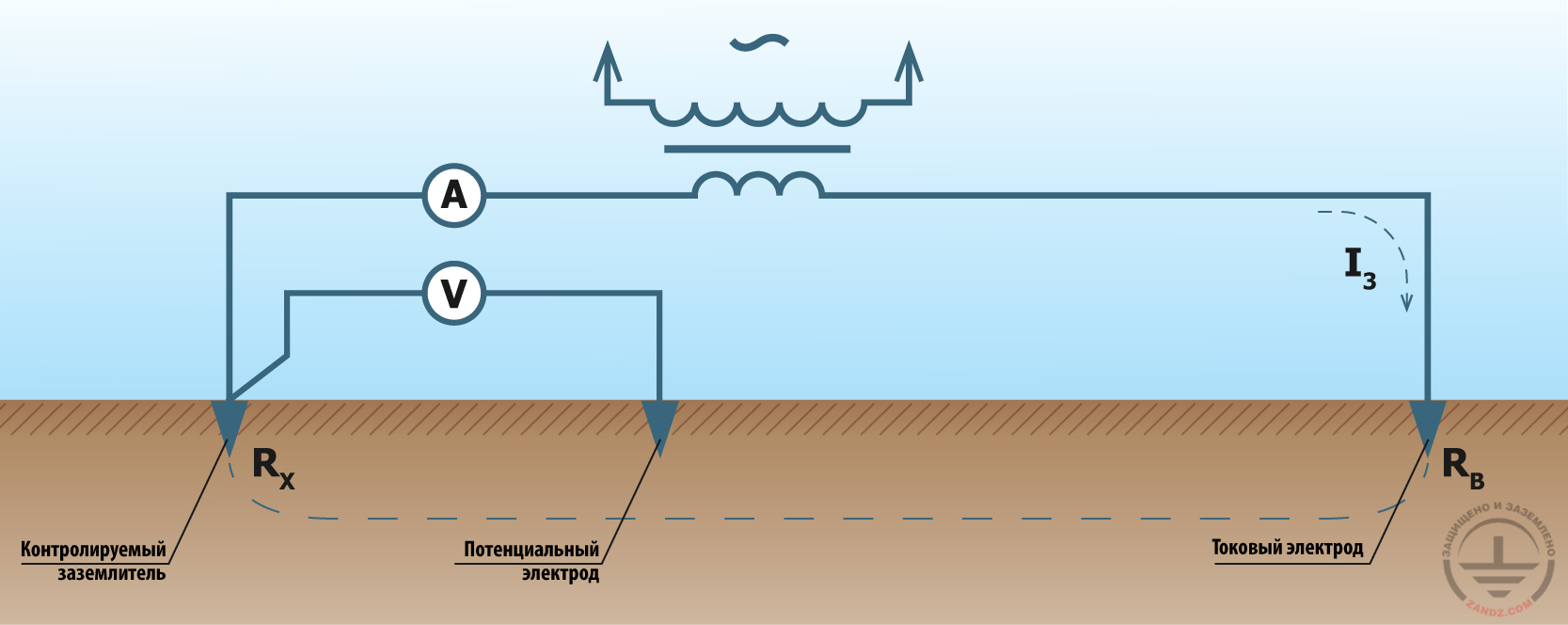When we talk about security of people, it is preferable to use measuring methods which had been used for dozens of years. Talking about grounding, such a method is measuring of resistance with the help of combination of amperemeter and voltmeter (recommended GOST R 50571.16-2007). Sometimes this method is called "three-wire" (or "three-clamp"). There exists its more precise modification called "four-wire" ("four-clamp") method. As a rule, both methods can be implemented in one measuring device.

| контролируемый заземлитель | controlled ground electrode |
| потенциальный электрод | potential electrode |
| токовый электрод | current electrode |
Grounding must be disconnected from the electric plant when holding measuring by this method. A potential pin is buried into the ground at the distance of at least 20 m from the studied grounding. The current pin is buried into the ground at the distance of at least 40 m from the studied grounding. The pins and grounding must be located on one line. Specific recommendations on the distances between the grounding and the pins may differ depending on the grounding type and model of the measuring equipment to be used. As a rule, such recommendations are indicated in the manual to the measuring device.
You can read more details about these methods in the article "Measuring of grounding resistance by three and four-wire methods".
See also:

